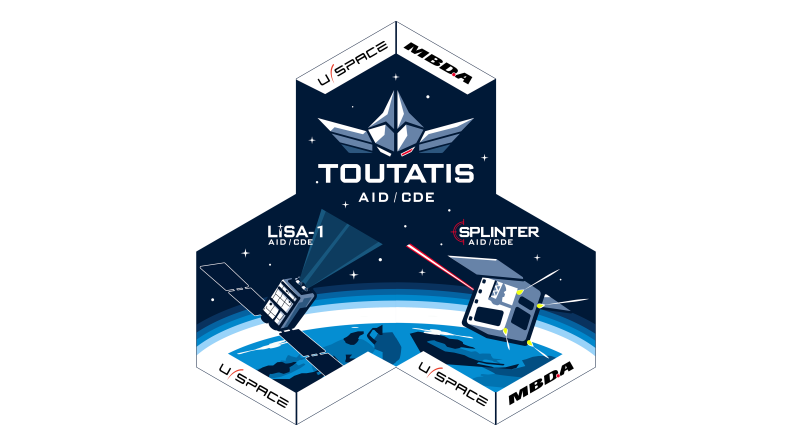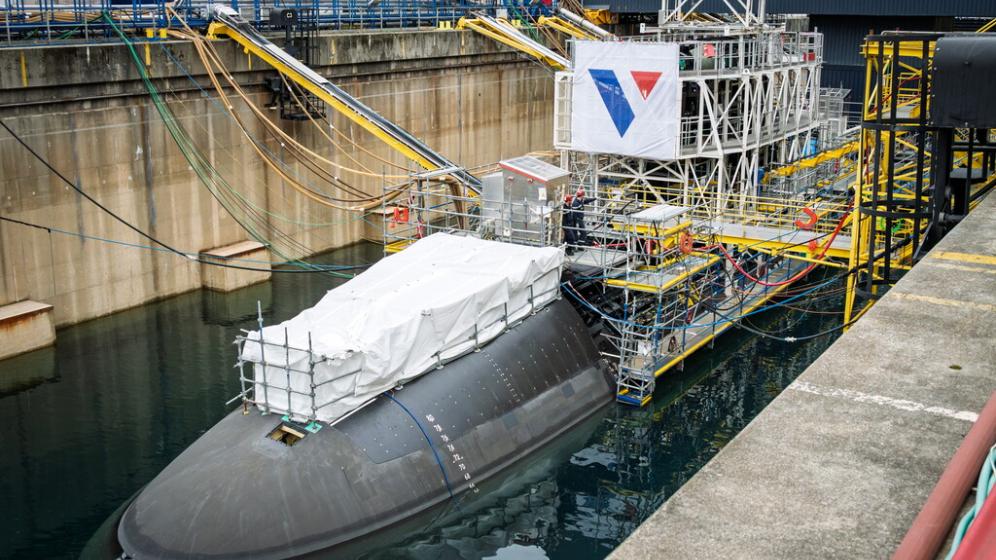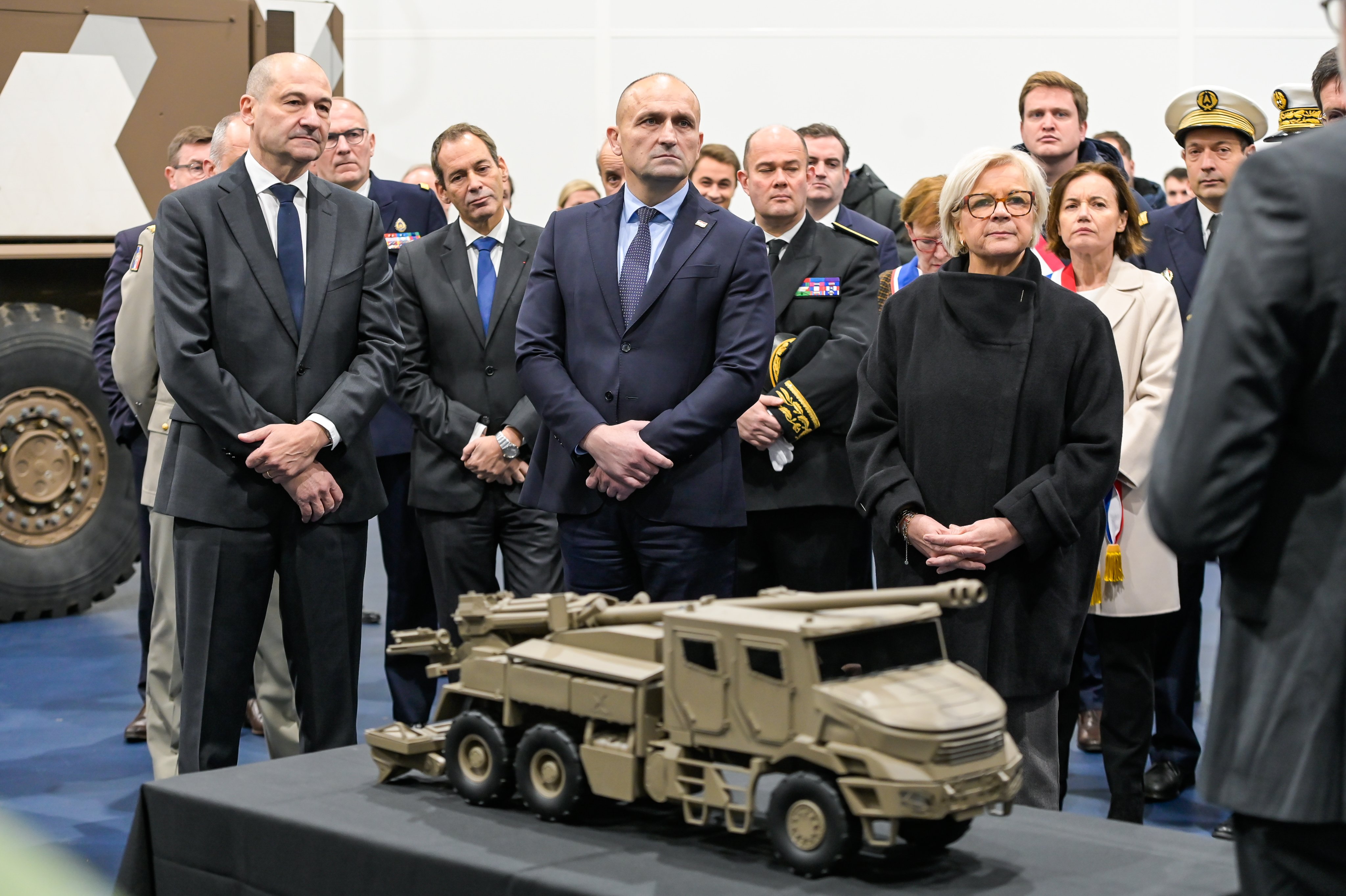At a time of unprecedented technological change our interests in space are being confronted by new risks and emerging threats. The French Ministry of the Armed Forces took them into account in its 2019 Space Defence Strategy (Stratégie spatiale de défense). It has created the Space Command (Commandement de l’Espace—CDE), whose build-up will generate an initial operational capability in Toulouse in 2025 to cover all military space operations.
Space Defence: Challenges for the French Space Command
Space pervades every aspect of current human endeavour and plays a growing role in defence and security matters. The strategic stakes it raises are encouraging competition between powers, and risk leading to contest for that domain. Space infrastructure confers on military operations an essential factor of operational superiority which will in the future be extended to collaborative combat systems. The conflict in Ukraine has recently demonstrated the strategic importance of the space domain, in particular through the role played by commercial organisations, whose support in terms of positioning, communications and remote detection has been made widely accessible down to the lowest tactical level.
A Space of Confrontation
The continuum of competition–challenge–confrontation is the current standard interpretation of forms of conflict. Space is well-fitted to this approach since the space domain is a grey area that encourages the often insidious deployment of hybrid strategies. This grey area is characterised by the intrinsically dual nature of the spatial environment, of those who act within it and of their techniques and capabilities. Characteristic also are the absence of borders and territories, the difficulty in detecting abnormal or hostile behaviour in real time, its regulation mechanisms which are no longer suited to the growth of space traffic, and the arrival of new actors.
Given the acceleration in these new changes, the President of the Republic declared on 13 July 2018(1) that space had become a genuine challenge to national security.(2) The national Space Defence Strategy (Stratégie spatiale de défense—SSD) presented in July 2019(3) echoed French concerns about the emergence of new space-related threats.(4) The SSD is aimed at strengthening our strategic autonomy in space and ensuring our freedom of access to that environment, and sets the objective of protecting our space interests within respect for the peaceful use of space. There is also the question of revising our industrial model by benefiting from the opportunities that New Space offers and by contributing to (re)making France a driving force in Europe in space matters. Extension of such cooperation to operations in space is a further consideration.
The legal framework relating to activities in space is somewhat liberal and open to different interpretations. Favoured hybrid strategies combine conventional threats with concealment, access denial and harassment activity below the threshold of armed aggression, which confirms the use of the law as a strategic weapon of power. France is not inactive in this regard, and promotes responsible behaviour in space through a pragmatic approach at the European level.
Another structuring change is the emergence of what is referred to as New Space, which has eased access to space and to space capabilities. Thus, space is witnessing significant development and offering new opportunities, but is also introducing numerous risks and threats into what is now considered the fifth environment of conflict after those of land, sea, air and cyber.
European strategic autonomy is currently suffering economically, from the timescale between the end of the Ariane 5 programme and the arrival of Ariane 6 and structurally, from international competition, which is adapting to material that is (partially, at least) reusable. In 2022, of the 91 American launches, 61 were performed by SpaceX, which has announced 100 flights for 2023—a launch every 4 days! In 2022 there were also 64 Chinese and 22 Russian shots, yet only 5 European. Following a period of transition between the retirement of its space shuttle in 2011 and the appearance of a new model of governance, the United States now enjoys a sort of hegemony with its dynamic and competitive commercial sector and actors such as SpaceX, who have vertically integrated their value chain.
Once all of these challenges had been identified by the SSD in July 2019, it became imperative to implement it immediately at both structural and operational levels. Space Command (Commandement de l’Espace—CDE) was created, and took over from its predecessor, the Joint Space Command (Commandement interarmées de l’Espace—CIE).
A Command Fitted to the Challenges of Controlling Space, Identified in the SSD
The Genesis of Space Command
On creation, the CDE had 220 personnel, divided across 4 sites (Creil, Paris, Lyon and Toulouse). The number has increased by about 50 each year, and by 2025 should reach some 500, who will work together in a new building in Toulouse.
Foreshadowing that date, administrative group 101 (Formation administrative 101) was created in January 2021. It is housed in modular buildings on the Toulouse space centre (Centre spatial de Toulouse—CST) site in the National Centre for Space Studies (Centre national d’études spatiales—Cnes), where the core of military space operations (Opérations spatiales militaires—OSM) will be sited.
Space Command is tasked with ensuring control of military assets and space surveillance, contributing to alerting the population in case of an incoming danger from space, planning and conducting military action in space, ensuring the support of space capabilities and offering space support to operations.
The command centre, key to building up the strength of our organisation
Around 2025, the Astreos space operations information system will be the foundation of our military space system and will be the interconnected operational backbone of the space defence system. It will be essential to the conduct of space operations, control of the environment and support of multi-domain operations.
It was developed to support the C4 functions of space operations (command, control, communications and computers) and will be able to collect, store and handle considerable quantities of data in real time, connect and control all elements of our space system, direct our sensors in near-real time, call on major computing power appropriate to our operational needs and, lastly, to exchange information with other domain and allies’ command centres.
To achieve these aims, the Astreos architecture will be built around a data centre. When associated with high performance computing, this will enable collection of all data coming from space-based sensors and handle it in a lead time suited to the conduct of operations. Astreos will therefore be material evidence of the build-up of space defence within the armed forces and a showcase of our capabilities and of our space expertise. For these reasons the development of Astreos to unite command and control of military space operations must be central to our considerations in the years to come.
Expertise in space with regard to the surveillance and protection of our interests in that environment is essential to the military services rendered by CDE and carries dual benefits. This duality requires coordination and sharing of information between the various actors. For example, the European IRIS² constellation (Infrastructure for Resilience, Interconnectivity and Security by Satellite) will enable high data rate, short timescale connectivity, able to cover the poles. The European constellation will also be able to offer an inter-satellite communication relay service, a transport layer which will contribute to the formation of an overall, resilient space architecture.
A further example of the duality is space surveillance. Responding to a need for space traffic management and for identification and attribution of activity in space the topic is being dealt with at the institutional level within the European Union Space Surveillance and Tracking (EU SST) framework. It is a partnership of 15 EU member states which are now putting together their national SST capabilities in order to offer three services: collision avoidance, analysis of atmospheric re-entry risks and analysis of fragmentation of debris. It is intended that these services will broaden and diversify in the future in order to rise to the challenges posed by space becoming more and more crowded with smaller and smaller objects. The French large-array space surveillance radar, Graves (Grand réseau adapté à la veille spatiale), has recently been renovated and will be developed further in response to these mutual needs. The duality of use, to serve both the wider community (for safety aspects) and the military community (for security matters) is fundamental to the partnership with the commercial sector, which complements our national data.
The Balance Between Public Sector and Services: Support of the Private Sector
The conflict in Ukraine is highlighting the role that commercial actors can play, be it at the strategic, operational or tactical level. Ukraine depends on space-related services, such as internet, telecommunications, optical, radar and infra-red imagery, and eavesdropping, often supplied by private, mostly American companies, a diversification of the actors in the ecosystem and of perspectives for dual applications. The presence of these new actors is an opportunity for complementing our national capabilities, which nevertheless remain essential to our independence of assessment. Military space operations have therefore been drawn towards making use of commercial solutions which are integrated into operations via a Commercial Integration Cell. The pertinence of including commercial actors in space defence has been demonstrated in the framework of the AsterX military space exercise, organised by CDE. Buying-in services increases the speed of procurement and adds dynamism to the national space sector by creating a virtuous circle, linking industry with orders from the public sector.
The way this cooperation works with the commercial sector allows CDE to build up its capabilities on three levels: the sovereign and extended core capabilities, and the complementary capability. The sovereign core corresponds to our nationally owned equipment, and the extended core guarantees us access to services from our allies or trusted operators, whilst the complementary capability focuses on purchasing services with no particular guarantee.
To be in control of this issue we need to have knowledge of our competitors’ space ecosystem in order to measure their degree of use of the new private space infrastructure. On the other hand, we also need to take control of exports to protect against any form of misappropriation of national commercial capacity. Furthermore, we need to broach doctrinal matters—something Russia has already done in its declaration to the UN that commercial space infrastructure would become a legitimate target in the case of ‘reprisals’.
As the public/private balance evolves, the innovation brought by the private sector offers responses to the highly strategic matters of improvement and diversification of revisit frequency. We will eventually need access to near-real time solutions from radar, multi-spectral and optical data integrated into our space operations information system.
Advancing innovation through symmetry between the private sector and the forces
In coordination with other actors in the field, a military space lab has been established in Toulouse with the help of Aerospace Valley, in order to get the best from the innovations offered by French New Space. The proximity to the Defence Innovation Agency (Agence de l’innovation de défense—AID), Cnes, the Directorate General of Armament (Direction générale de l’armement—DGA) and the French Aerospace Lab (officially, the Office national d’études et de recherches aérospatiales—Onéra) will allow pooling of ideas and facilitate definition of needs which will benefit future military space capability and, ultimately, bring innovative projects to life. The space lab is called Lisa, the Forces’ laboratory for innovation in space (Laboratoire d’innovation spatiale des armées).
This new innovative wave, carried along by agile structures of new methods of production and management, is catalysing innovation and feeding on the expertise developed by past actors. It is not a question, therefore, of opposing Old Space with New Space; more one of benefiting from their complementarity.
Strengthening bilateral and multilateral cooperation
International partnerships have a particular importance in space matters. Above all, interaction is possible with all other actors independent of geographical proximity, added to which, partnerships are a measure of both operational effectiveness and resilience.
Though historically having focused on capabilities, international cooperation is increasingly investing in the field of military space operations. This new priority brings with it new challenges in terms of interoperability and information sharing in a field considered strategic: multilateral discussions in the EU or NATO are crucial here. In 2020 France joined the Combined Space Operations initiative,(5) whose aim is to set the boundary of future multi-national military space operations.
Objective 2025: Time is not on Our Side
The 2025 milestone will mark the end of the build-up of CDE since it corresponds with achieving initial operational capability to counter increasing risks and new threats.
A cyber risk identified in the 2019 Space Defence Strategy, which has worsened since then
Though the consequences to the ground user segment have remained limited, some of the past attacks nevertheless confirm the strong interdependence between space and cyber domains, and the fact that such a mode of operation can carry a potentially significant military effect on the adversary while remaining below the threshold of conflict.
Three major categories of cyber attack on space infrastructure can be identified: denial of service, misappropriation and seizing control, which amounts to sending spoofing signals on the up-link.
Lessons learned from the war in Ukraine about cyber attacks, availability to Ukraine of American commercial services for connectivity, observation and eavesdropping, and jamming of satellite positioning and navigation systems in the area which disrupted civil and military activity, all underline the relevance of the SSD regarding the importance of control of data.
A cyber risk demanding effectiveness and resilience in our control of data
In the context of New Space, we have to adapt the architecture of space systems on two levels: resilience in the face of new threats, and control of data.
We need to examine rapidly the question of active defence in order to face up to new threats in low orbit. Active defence has several dimensions and might be effected by lasers or patrolling surveillance satellites which could be put reactively into a chosen orbital plane. Innovation will be the key to rapid achievement of this ambition.
Our resilience will also be boosted by the implementation of the major impact Action et REsilience Spatiale (ARES—space action and resilience) programme with a view to increasing the forces’ capability for action in space. Through it, a means of active defence will enter operational service in geostationary orbit before the end of the decade.
Reduction in the acquisition time for space data is critical, especially in the context of the Ukrainian conflict where private constellations have demonstrated their value. The aim of the Chronos project, which started in 2022, is to reduce the current delay between acquisition and availability of information, 24 hours on average, to under one hour in the majority of cases whilst improving the resilience of the acquisition arrangements. Chronos is based on national building blocks which largely already exist, and on capabilities available off the shelf or from service providers. The project is bringing together all actors in the domain, and is paying special attention to the French and European defence industrial and technological base.
Conclusion
Having demonstrated the relevance and interest in centralising the expertise and responsibilities of the military space domain, the CDE holds all the aces for achieving its objectives by 2025. Today it is essential to understand and control our environment if we are to continue to operate within it. This objective will be met in particular through deeper relationships with our national, international and commercial partners.
March 2023
(1) Macron Emmanuel, Declaration of the President of the Republic on defence policy and external military operations, Paris, 13 July 2018 (https://www.vie-publique.fr/).
(2) Incorporated into the 2017 Revue stratégique de défense et de sécurité (https://www.vie-publique.fr/).
(3) Space working group, Stratégie spatiale de défense, (Space defence strategy) Ministry of the Armed Forces, 2019 (https://medias.vie-publique.fr/data_storage_s3/rapport/pdf/194000642.pdf).
(4) Especially the activity of the Russian Luch-Olymp satellite.
(5) Which brings together the Five Eyes nations (Australia, Canada, New Zealand, United Kingdom and United States) and Germany.







